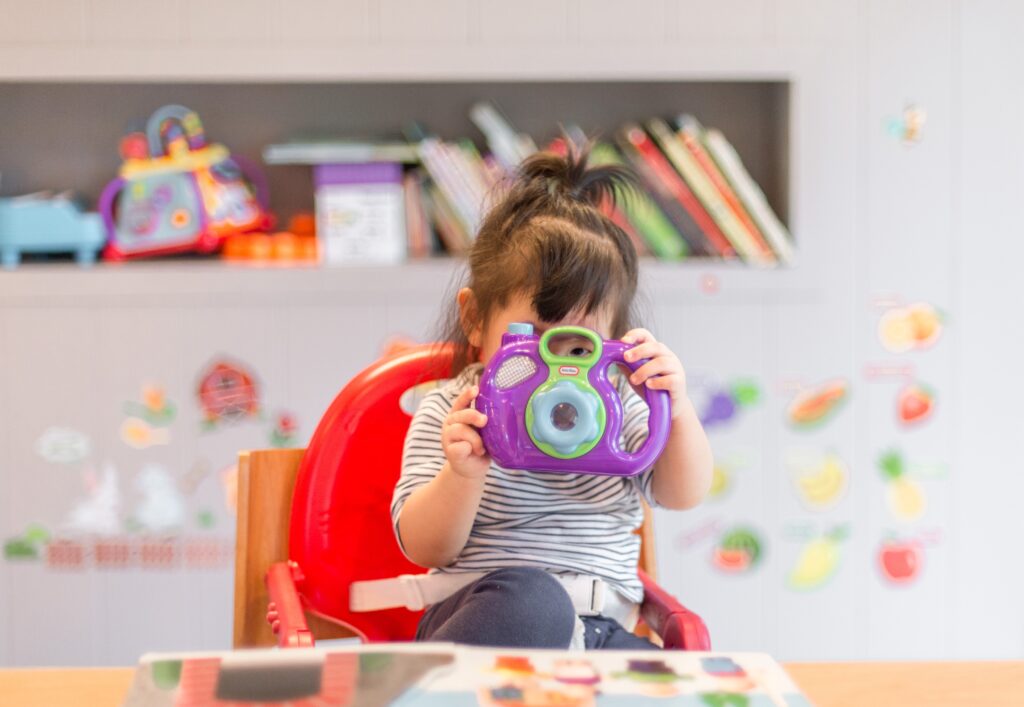In this article, you will learn some helpful tips and tricks for getting your baby to sleep better. We will discuss different techniques and strategies that can help create a more peaceful and restful sleep environment for your little one. From establishing a bedtime routine to creating a comfortable sleep space, we will cover everything you need to know in order to promote better sleep for your baby. So if you’re tired of sleepless nights, keep reading to discover some effective solutions for your baby’s sleep troubles.

Understanding Baby Sleep Patterns
The Importance of Sleep for Babies
Getting enough sleep is crucial for infants as it plays a vital role in their growth and development. Sleep not only helps babies rest and recharge but also contributes to their overall health and well-being. During sleep, their bodies produce growth hormones, and their brains process the information they’ve learned during the day. As a parent, it’s essential to understand your baby’s sleep patterns to ensure they are getting the rest they need.
Understanding Newborn Sleep Cycles
Newborns have an irregular sleep pattern, sleeping for short periods of 2-3 hours at a time. This is because they have smaller stomachs and need to eat frequently. As they grow, their sleep patterns will begin to consolidate into more extended periods. By the time they reach three or four months of age, most babies will start sleeping for longer stretches at night. It’s important to be patient during this transition period and provide a sleep-friendly environment to help them adjust.
Creating a Sleep Schedule
Establishing a sleep schedule can be incredibly helpful in ensuring your baby gets the adequate sleep they need. Babies thrive on routine, so having a consistent sleep schedule can create a sense of security and help them understand when it’s time to sleep. Start by setting a regular bedtime and wake-up time, and try to stick to it as closely as possible. Eventually, your baby will start associating these times with sleep and wakefulness.
Creating a Sleep-Friendly Environment
Choosing the Right Crib and Mattress
The sleep environment plays a crucial role in promoting healthy sleep for your baby. Invest in a safe and comfortable crib with a firm mattress. Ensure that the crib meets safety standards and does not have any loose or soft bedding that could pose a suffocation hazard. A good-quality mattress will provide the necessary support for your baby’s growing body and promote better sleep.
Creating a Calm and Cozy Bedroom
To create a sleep-friendly atmosphere in your baby’s bedroom, keep the lighting dim and minimize any noise or distractions that could disrupt their sleep. Use blackout curtains to block out light and create a calming ambiance. Consider using a white noise machine or a fan to create a soothing background noise that can help drown out any sudden sounds that may startle your baby awake.
Setting the Ideal Room Temperature
Babies are sensitive to temperature, so it’s important to ensure their sleeping environment is neither too hot nor too cold. The ideal room temperature for optimal sleep is between 68 and 72 degrees Fahrenheit (20-22 degrees Celsius). Dress your baby in breathable and comfortable sleepwear suitable for the temperature of the room. If the room is on the cooler side, consider using a sleep sack or a swaddle to keep your baby warm.

Establishing a Bedtime Routine
The Benefits of a Consistent Bedtime Routine
Having a consistent and soothing bedtime routine can help signal to your baby that it’s time to wind down and prepare for sleep. This routine can include activities such as a warm bath, gentle massage, reading a book, or singing a lullaby. As you establish this routine, your baby will gradually associate these activities with sleep, making the transition to bedtime smoother and more peaceful.
Choosing Soothing Activities Before Bed
Engaging in calming activities before bed can help relax your baby and prepare them for sleep. Avoid stimulating activities such as playing with bright toys or watching screens close to bedtime, as these can interfere with their ability to wind down. Instead, choose activities that promote relaxation, such as gentle rocking, snuggling, or listening to soft music.
Developing Healthy Sleep Associations
It’s important to help your baby develop healthy sleep associations by creating a consistent sleeping environment. By associating certain cues or rituals with sleep, such as a favorite blanket or a specific scent, your baby will begin to recognize these signals as a prelude to sleep. This can help them feel secure and comfortable, making it easier for them to fall asleep and stay asleep throughout the night.
Tips for Soothing a Crying Baby
Understanding Different Crying Patterns
Babies communicate through crying, and it’s essential for parents to understand their baby’s crying patterns to address their needs effectively. Crying can indicate hunger, discomfort, tiredness, or simply a need for attention and comfort. By paying attention to the intensity, pitch, and duration of their cries, you can better determine what your baby needs and respond accordingly.
Using Swaddling and White Noise
Swaddling can provide a sense of security for babies, replicating the comforting feeling they had in the womb. Wrapping your baby snugly in a lightweight blanket can help calm them down and promote sleep. Additionally, using white noise, such as the sound of a fan or a dedicated white noise machine, can help drown out external noises and create a soothing environment conducive to sleep.
Comforting Techniques for Colicky Babies
Colic is a common condition characterized by excessive crying and fussiness, often occurring in the late afternoon or evening. While the cause of colic is not entirely understood, there are several comforting techniques that can help alleviate the symptoms. Gentle rocking, carrying your baby in a baby carrier, or using a pacifier can provide soothing comfort and help them settle down for sleep.

Managing Nighttime Feedings
Navigating Breastfeeding and Sleep
Breastfeeding provides numerous benefits for both you and your baby, but it can sometimes make it challenging to establish a consistent sleep routine. When it comes to nighttime feedings, it’s important to find a balance that works for both you and your baby. Consider keeping the lights dim, avoiding stimulating activities during feedings, and going back to sleep as soon as possible to help your baby understand that nighttime is for sleeping.
Introducing Solid Foods to Promote Sleep
Around six months of age, you may begin introducing solid foods into your baby’s diet. Some parents find that introducing a small, age-appropriate snack before bedtime can help keep their baby full and satisfied throughout the night. However, it’s essential to consult with your pediatrician before introducing solids and to ensure that your baby is developmentally ready.
Avoiding Overfeeding and Nighttime Hunger
It’s important to strike a balance between providing adequate nourishment for your baby and avoiding overfeeding, which can lead to discomfort and disrupted sleep. Monitor your baby’s feeding cues and offer them the appropriate amount of milk or formula during the day. During nighttime feedings, aim to keep the environment calm and quiet, avoiding any stimulating interactions that may wake your baby up further.
Dealing with Sleep Regression
Recognizing the Signs of Sleep Regression
Sleep regression refers to a period when a baby who was previously sleeping well suddenly starts experiencing disrupted sleep patterns. Common sleep regression periods occur around four months, eight months, and twelve months of age. Signs of sleep regression include increased fussiness, difficulty falling asleep, frequent night waking, and shorter naps. Recognizing these signs can help you address any sleep issues promptly.
Strategies for Helping Your Baby through Regression
During periods of sleep regression, it can be challenging to establish a consistent sleep routine. However, there are several strategies that can help you navigate through this phase. Stick to your established bedtime routine, offer comfort and reassurance during night waking, and be patient as your baby adjusts to their changing sleep patterns. With time and consistency, your baby will eventually return to a more predictable sleep routine.
Maintaining Consistency during Regression
Consistency is key when dealing with sleep regression. Even though it may be tempting to change your baby’s sleep routine during this phase, it’s essential to maintain consistency as much as possible. This means sticking to the same bedtime, naptime, and waking times, and offering the same sleep cues and associations. By providing a predictable routine, you can help your baby navigate through the regression more smoothly.

Handling Naptime Challenges
Creating a Naptime Routine
Establishing a consistent naptime routine can help cue your baby that it’s time to sleep during the day. This routine can be a shorter version of the bedtime routine and can include activities such as reading a book, singing a lullaby, or using a sleep cue, such as a specific phrase or word. By following a consistent routine, you can signal to your baby that it’s time to relax and prepare for a nap.
Creating an Ideal Nap Environment
Similar to the sleep environment at night, it’s important to create a nap-friendly environment during the day. Ensure the room is darkened, using blackout curtains or blinds to block out sunlight. Keep the room quiet or use white noise to minimize any external noises that could disturb your baby’s nap. Additionally, dress your baby in comfortable sleep clothes appropriate for the room temperature to promote better sleep.
Transitioning from Multiple to Single Naps
As your baby grows and develops, their nap schedule will change. Typically, babies transition from multiple naps to two naps per day around six to nine months. Eventually, they will transition to a single nap around 14-18 months. Pay attention to your baby’s sleep cues and gradually adjust their nap schedule to accommodate their changing needs. This transition may take time, so be patient and flexible as you establish a new routine.
Addressing Sleep Safety Concerns
Reducing the Risk of Sudden Infant Death Syndrome (SIDS)
Sudden Infant Death Syndrome (SIDS) is a heartbreaking tragedy that can occur during sleep. To reduce the risk of SIDS, it’s important to follow safe sleep practices. Always place your baby on their back to sleep, ensure a firm mattress with a fitted sheet, and avoid any loose bedding or soft objects in the crib. Additionally, consider room-sharing with your baby for the first six months, but avoid bed-sharing to reduce the risk of suffocation.
Safe Co-Sleeping Practices
If you choose to co-sleep with your baby, it’s crucial to practice safe co-sleeping guidelines. Ensure that the bed is large enough to provide a separate sleep surface for your baby, and avoid using any heavy blankets or pillows near your baby. Consider using a co-sleeper bassinet that attaches securely to your bed to provide a safe sleeping space for your baby while still allowing for close proximity.
Identifying and Managing Sleep-Related Hazards
It’s important to be aware of any potential sleep-related hazards that could pose a risk to your baby’s safety. Keep cords from blinds or curtains out of reach, and ensure that electrical outlets are covered. Avoid placing your baby’s crib near windows or shelves where objects could fall. Regularly check the crib for any loose or damaged parts, and ensure that it meets safety standards to reduce the risk of accidents.

Seeking Professional Help
When to Consult a Pediatrician or Sleep Specialist
If you’re struggling with your baby’s sleep patterns and nothing seems to be working, it may be time to seek professional help. Consult with your baby’s pediatrician, who can provide guidance and address any underlying medical concerns. In some cases, a sleep specialist may be recommended to evaluate your baby’s sleep patterns and provide expert guidance tailored to your specific situation.
Options for Sleep Training
Sleep training can be a valuable tool in helping your baby learn to self-soothe and develop healthy sleep habits. There are various sleep training methods available, such as the Ferber method or the Weissbluth method, each with its own approach. It’s important to educate yourself on the different methods and choose one that aligns with your parenting style and the needs of your baby.
Alternative Approaches to Sleep Solutions
If sleep training doesn’t feel like the right fit for you and your baby, there are alternative approaches you can explore. Some parents opt for gentle sleep methods, such as the pick-up, put-down method or the no-cry method. These methods focus on gradually teaching your baby to fall asleep without excessive crying or distress. Remember, every baby is unique, so it’s important to choose an approach that feels right for your family.
Conclusion
Importance of Finding the Right Sleep Solutions
Navigating your baby’s sleep patterns can be challenging, but finding the right sleep solutions is essential for their health and well-being. By understanding their sleep patterns, creating a sleep-friendly environment, establishing a bedtime routine, and addressing any sleep challenges that arise, you can set the stage for healthy sleep habits that will benefit your baby and the entire family.
Celebrating Baby’s Achievements in Sleep Habits
As your baby grows and develops, it’s important to celebrate their achievements in sleep habits. Whether it’s successfully transitioning to a new sleep schedule, self-soothing, or sleeping through the night, acknowledge and praise their progress. Positive reinforcement can help reinforce healthy sleep habits and create a positive association with sleep.
Continuing to Adapt and Evolve with Your Baby’s Needs
Remember that your baby’s sleep needs will continue to evolve as they grow. What works for them at one stage may not work in the next. Stay flexible and be prepared to adapt your sleep routines and strategies as needed. By staying attuned to your baby’s cues and responding to their changing needs, you can continue to provide the best sleep solutions for them throughout their early years.





